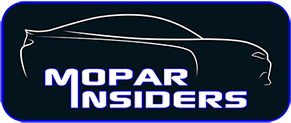It took some time for Walter Chrysler and his company to sort out the brands of Chrysler, DeSoto, and Dodge. Plymouth was always the bottom rung, an entry level brand. It had older features, smaller engines, and less flamboyance. The first Plymouth was a badge engineered Chrysler model, and there would be other Plymouth models through the years, which were also a previous year Chrysler with a new Plymouth front clip, interior and engine.
Some say DeSoto was created as ruse to convince the heirs to quit stalling and sell Dodge. In any case, they did sell and put Chrysler, the company, on a solid industrial footing. Dodge was more than a brand, it was a manufacturing powerhouse with foundries, machine shops and factories. Dodge gave Chrysler the capacity to build enough Plymouths to make that brand number 3 in sales from the Depression until the Forward Look era. Dodge, the brand, was absorbed with some indigestion. Dodge used different engines and came into the Chrysler house just as the corporation was phasing in the next generation of four main bearing six cylinder engines. The corporate straight eights were being changed as well. The first Chrysler engineered Dodges were placed above DeSoto.
DeSoto was on the rung above Plymouth and below Dodge in the early 1930s. They received racier styling than Plymouth along with six cylinder engines instead of the Plymouth fours. Dodge offered sixes and some large majestic eight cylinder models encroaching on the Chrysler brand position. The corporate brand arrangement was a work in progress as DeSoto briefly offered an eight as the Depression tightened its grip on the economy.
Then the Airflow happened. Every division except Chrysler was six cylinder only. The massive Chrysler Imperial Eights with the open body styles were dropped and replaced with the radically different Airflow cars. DeSoto shared the Chrysler Airflow bodies on shorter wheelbases and powered by six cylinder engines. All DeSotos were Airflows, while the six cylinder Chrysler models had more conventional styling. DeSoto sales remained low until that division received some conventionally styled models, but the DeSoto brand climbed above Dodge on the corporate ladder until the bitter end.
Imperial was a premium Chrysler model and not a separate brand. Before the Airflow a Chrysler Imperial would approach the Cadillac, Lincoln and Packard price range, but the Chrysler division would not compete directly against the luxury makes except for Limousines. It wasn't until Imperial became a separate brand in the 1950s that it would compete against the luxury brands. Let me interject here, luxury is not the right word to use, the correct term is prestige. Cadillacs and Lincolns had prestige because they offered large multi-cylinder engines under long hoods while Imperials were only sixes and straight eights. It wasn't until the Hemi V8 that the Imperial was prestigious. A Limousine was not necessarily prestigious, because during those years prior to Imperial as a separate division, cities like New York required taxis had to be limo length and be able to accommodate steamship trunks. Because of these requirements all the Chrysler brands offered long wheelbase models. Plymouth offered LWB sedans until the war years. Dodge dropped their LWB model after 1952 while DeSotos went a year longer. Cadillac and Packard also offered taxi models. It was mostly DeSoto and Checker owning the LWB taxi market after Plymouths dropped its long sedans. Plymouth sedans would lend themselves to the shorter taxis in middle American cities for decades after.
When Imperial separated from Chrysler, the Chrysler brand would reach into DeSoto's price territory. Meanwhile Dodge was reaching up from below. This killed the DeSoto brand. That was sixty years ago. Meanwhile the elites started driving imports eschewing the domestic brands. Imperial failed as a brand and its final models were rebadged as Chryslers. Then everything was downsized. During the K-car era Chryslers were often badge engineered Plymouths. It wasn't until the Camelot like early years of Auburn Hills that Chrysler would once again reach higher with the LH sedans.
Today Chrysler as a brand with only two models competes against Cadillac, Lexus and Lincoln. This is not because Chrysler is reaching upward again, it is because these former luxury brands went down market as the sedan market collapsed. The Chrysler Pacifica offers appointments that better the smaller Cadillac and Lincoln Crossovers, despite the Chrysler being a minivan. Today the well heeled elites either drive high end trucks or Teslas depending on their political leaning. Trucks and minivans can be absolutely luxurious. Can these same vehicles have prestige among buyers? Tesla has prestige, but isn't very luxurious. Yes Tesla has a lot of tech, but that is a cheap but pricey substitute for a pleasant interior ambiance.
Chrysler, as a brand, should follow the example of Ram Trucks. Not by selling pickups, but by selling compelling products that rise above the bland offerings of competitive makes. The Pacifica does this, but the feat has to repeated in the arenas where the customers flock to.
